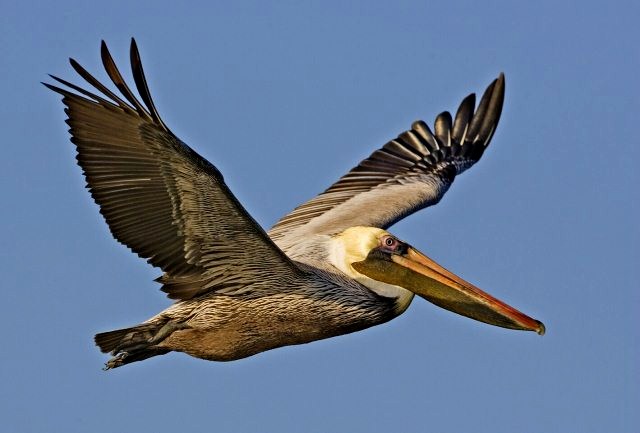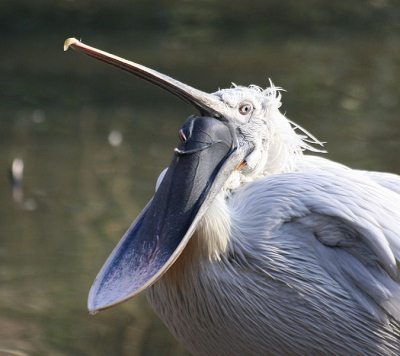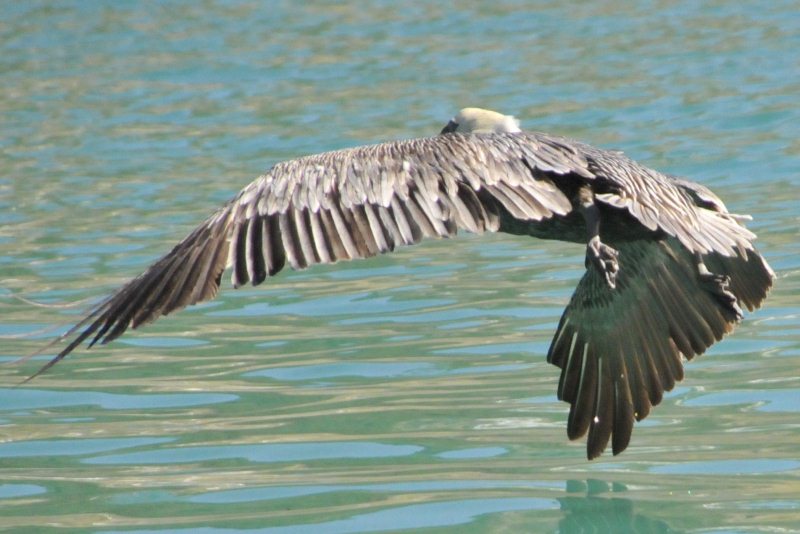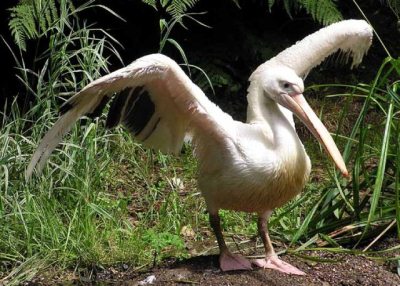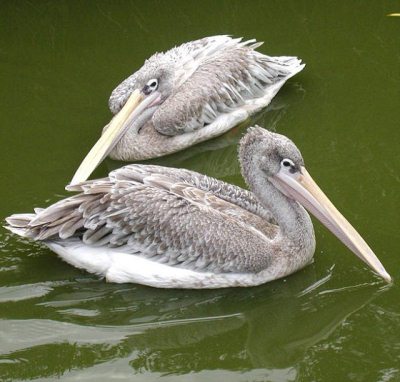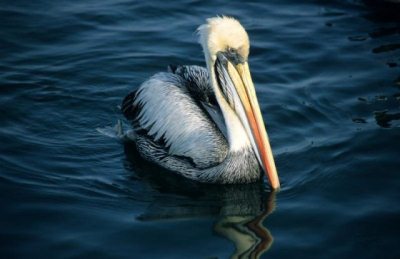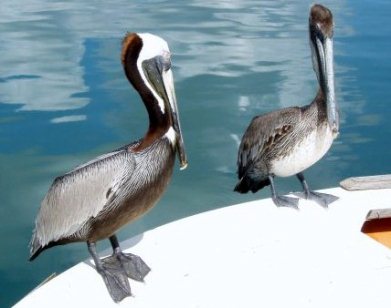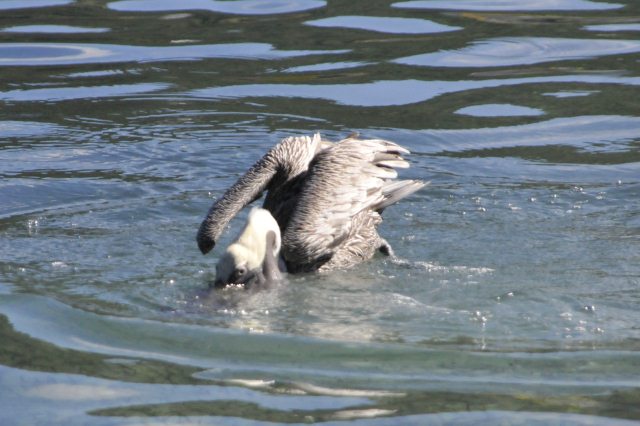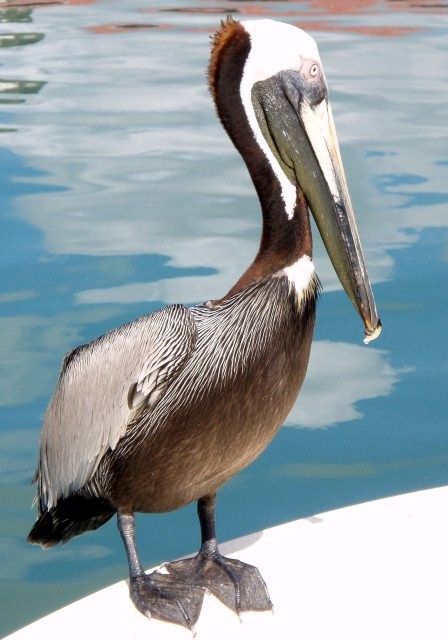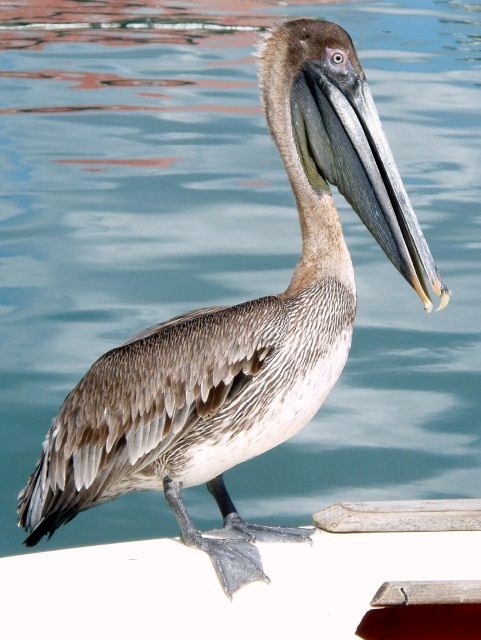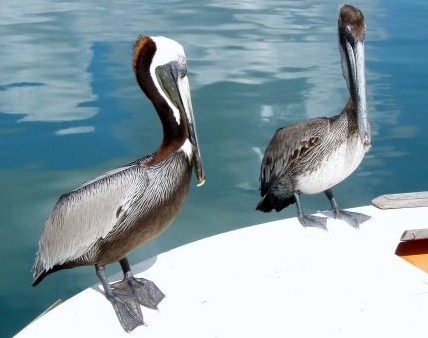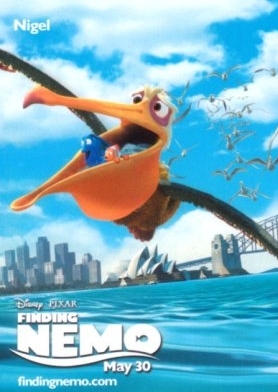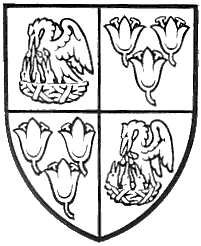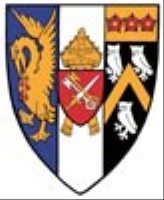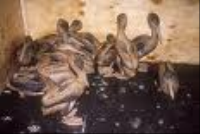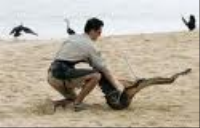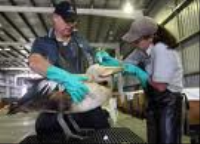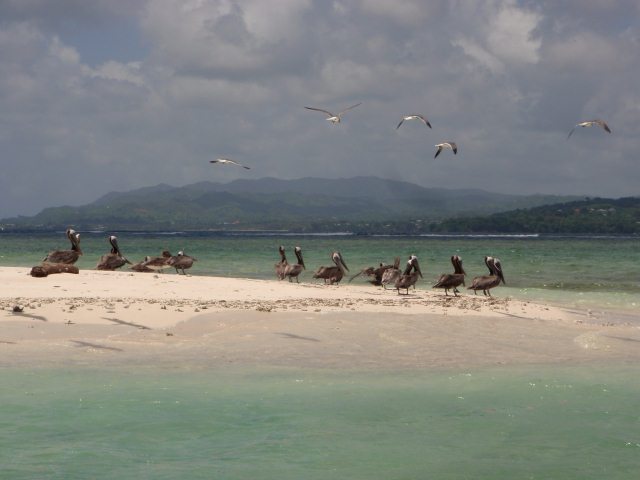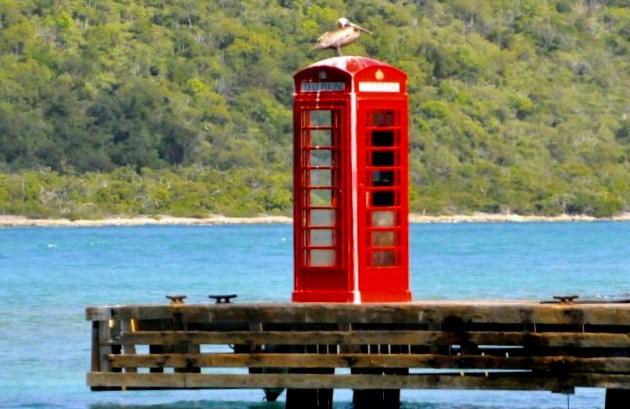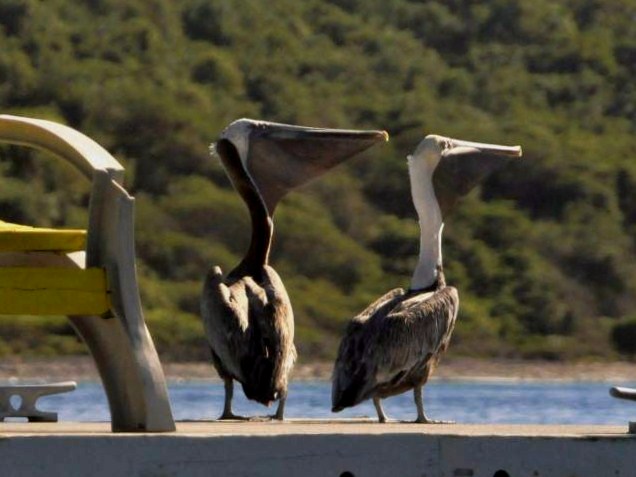|
Pelicans
A pelican, derived
from the Greek word pelekys (meaning “ax” and applied to birds that cut wood
with their bills or beaks), is a water bird with a large throat
pouch, belonging to the bird family Pelecanidae.
Along with the darters, cormorants, gannets, boobies, frigatebirds and tropicbirds, pelicans make up the order Pelecaniformes. Modern pelicans, of which there are eight species,
are found on all continents except Antarctica. They primarily inhabit warm regions, though breeding ranges reach
45° south (Australian
Pelican, P. conspicillatus)
and 60° North (American
White Pelicans, P.
erythrorhynchos, in western Canada). Birds of inland and coastal waters, they are absent from polar
regions, the deep ocean, oceanic islands and inland South
America.
Pelicans are large
birds
with large pouched bills. The smallest is the
Brown Pelican (P. occidentalis), as little as
six pounds, forty two inches long and can have a wingspan of as little as
six feet. The largest is believed to be the Dalmatian Pelican (P. crispus), at up to thirty three
pounds, seventy two inches long, with a maximum wingspan of nearly ten feet. The
Australian Pelican has the longest bill of any bird.
Pelicans swim well
with their short, strong legs and their feet with all four toes webbed (as in
all birds placed in the order Pelecaniformes). The tail is short and square,
with twenty to twenty four feathers. The wings are long and have the unusually
large number of thirty to thirty five secondary flight feathers. A layer of special
fibers deep in the breast muscles can hold the wings rigidly horizontal for
gliding and soaring. Thus they can exploit thermals to commute over a
hundred to feeding areas. Pelicans rub the
backs of their heads on their preen glands to pick up its oily
secretion, which they transfer to their plumage to waterproof it.
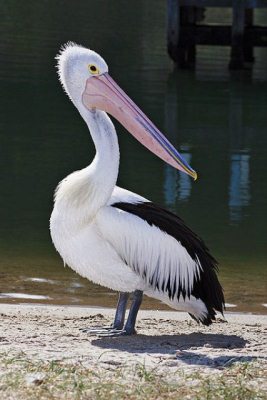
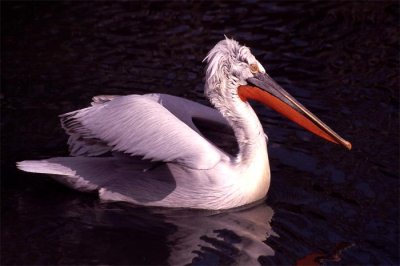
Australian and Dalmatian
Great
White and Pink-backed
Peruvian and Brown.
Sub-groups: I borrowed all the species types except the brown but hope one
day to make all their acquaintances. The pelicans can be divided into two
groups: those with mostly white adult plumage, which nest on the ground
(Australian, Dalmatian, Great White and American White Pelican), and those with gray or brown plumage, which nest in trees
(Pink-backed, Spot-billed and Brown, plus the Peruvian Pelican, which nests on sea rocks). The Peruvian Pelican is sometimes
considered conspecific with the Brown Pelican.
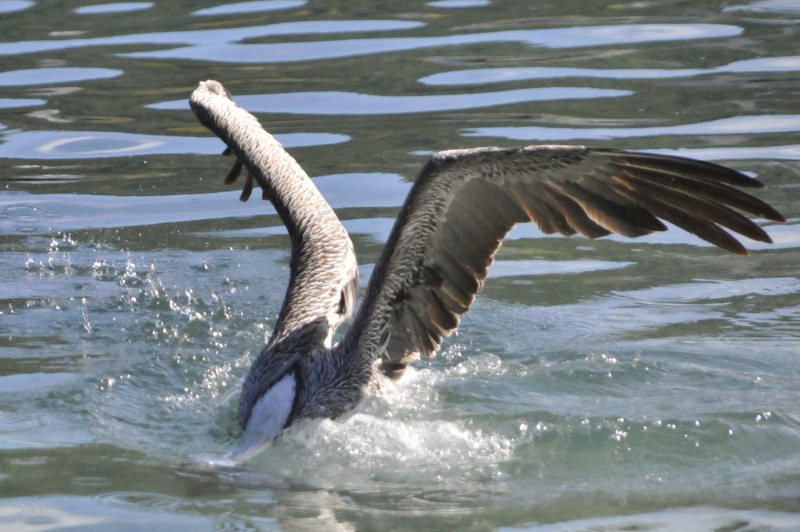
The diet of a Pelican
usually consists of fish, but they also eat
amphibians, crustaceans and on some occasions, smaller birds. They often catch
fish by expanding the throat pouch. Then they must drain the pouch above the
surface before they can swallow. This operation takes up to a minute, during
which time other seabirds are particularly likely to steal the fish. Pelicans
in their turn sometimes pirate prey from other seabirds. The white pelicans
often fish in groups. They will form a line to chase schools of small fish into
shallow water, and then scoop them up. Large fish are caught with the bill-tip,
then tossed up in the air to be caught and slid into the gullet head first.
The
Brown Pelican of North America, the one we see each and every day, usually
plunge-dives for its food. Rarely, other species such as the Peruvian Pelican
and the Australian Pelican practice this method.
Reproduction: Pelicans are gregarious and nest colonially. The ground-nesting
(white) species have a complex communal courtship involving a group of males
chasing a single female in the air, on land, or in the water while pointing,
gaping and thrusting their bills at each other. They can finish the process in a
day. The tree-nesting species have a simpler process in which perched males
advertise for females.
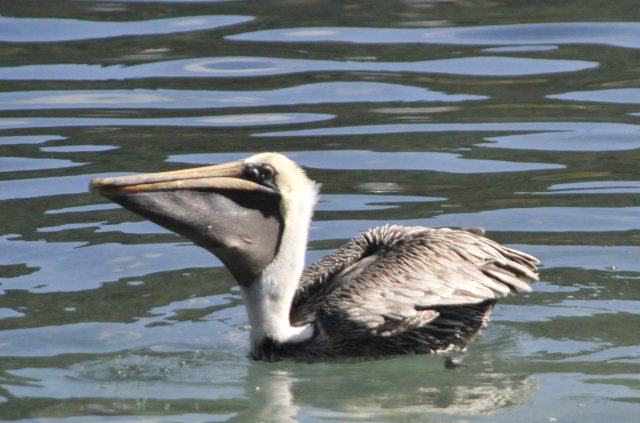
In all species
copulation begins shortly after pairing and continues for three to ten days
before egg-laying. The male brings the nesting material, ground-nesters (which
may not build a nest) sometimes in the pouch and tree-nesters crosswise in the
bill. The female then heaps the material up to form a simple structure.
Both
sexes incubate with the eggs on top of or below the feet. They may display when
changing shifts. All species lay at least two eggs, and hatching success for
undisturbed pairs can be as high as 95%, but because of competition between
siblings or outright siblicide, usually all but one nestling dies within the
first few weeks (or later in the Pink-backed and Spot-billed species). The young
are fed copiously. Before or especially after being fed, they may seem to have a
seizure
that ends in falling unconscious; the reason is not clearly known.
Handsome boy
Parents of
ground-nesting species have another strange behavior: they sometimes drag older
young around roughly by the head before feeding them. The young of these species
gather in "pods" or "crèches" of up to 100 birds in which parents recognize and
feed only their own offspring. By six to eight weeks they wander around,
occasionally swimming, and may practice communal feeding. Young of all species
fledge ten to twelve weeks after hatching. They may remain with their
parents afterwards, but are now seldom or never fed. Overall breeding success is
highly inconsistent. Pairs are monogamous for a single season, but the pair bond
extends only to the nesting area; mates are independent away from the nest.
However, some reference sources suggest they mate for life.
and this seasons gal or wife for life
???
Populations: The Dalmatian
Pelican is the rarest, numbers
are estimated between ten and twenty thousand. The Spot-billed
Pelican
estimated at thirteen to eighteen thousand. The most common is believed to be
the Australian Pelican, with a population generally estimated at around four
hundred thousand individuals. The White Pelican is more consistently estimated
at two hundred and seventy to two hundred and ninety thousand individuals. Our
chums the brown pelican may be even more numerous with estimates of six hundred
and fifty thousand so it has been removed from the endangered species
list.
From the
fossil
record it is known that pelicans have been around for over thirty million
years, the earliest fossil Pelecanus being found in
Oligocene deposits in France.
A prehistoric genus has been named
Miopelecanus, while
Protopelicanus may be a pelicanid
or pelecaniform – or a similar aquatic bird such as a pseudotooth
bird
(Pelagornithidae). The supposed Miocene pelican
Liptornis from Argentina is
anomen dubium, being based on
hitherto indeterminable fragments.
Pelican House Dublin and an advert for Finding Nemo
featuring Nigel.
Symbolism: In medieval
Europe,
the pelican was thought to be particularly attentive to her young, to the point
of providing her own blood when no other food was available. As a result, the
pelican became a symbol of the Passion of Jesus and of the
Eucharist. It also became a
symbol in bestiaries for self-sacrifice,
and was used in heraldry ("a pelican in her
piety" or "a pelican vulning (wounding) herself"). Another version of this is
that the pelican used to kill its young and then resurrect them with its blood,
this being analogous to the sacrifice of Jesus. Thus the symbol of the Irish
Blood Transfusion Service (IBTS) used to
be a pelican, and for most of its existence the headquarters of the service
was located at Pelican House in Dublin, Ireland. The emblems
of Corpus Christi College, Cambridge and Corpus Christi,
Oxford are pelicans,
showing its use as a medieval Christian symbol ('Corpus Christi' meaning 'body
of Christ'). Likewise a folktale from India says that a pelican
killed her young by rough treatment but was then so contrite that she
resurrected them with her own blood.
These legends may
have arisen because pelicans look as if they are stabbing themselves as they
often press their bill into their chest to fully empty their pouch. Other
possibilities are that they often rest their bills on their breasts, and that
the Dalmatian Pelican has a blood-red pouch in the early breeding
season.
The Brown
pelican is the
Louisiana state bird, is used today on the Louisiana State
Flag and
State Seal, is featured prominently on
the seal of the State University and by the State
Police. A pelican logo is
used by the Portuguese bank Montepio Geral. The pelican has
also been the subject of a poem by John Bennet and subsequent song
- The Pelican - by Richard
Proulx,
composed in 1995. The song was dedicated to the Cathedral Choir of the Cathedral
of the Madeline, Salt Lake City,
Utah. In the 2003 Pixar animated film
Finding Nemo, a Brown
Pelican
named Nigel helps Marlin find his son. In the Halo series, the UNSC uses a drop
ship named the Pelican. The Moche people of ancient
Peru
worshipped nature. They placed emphasis on animals and often depicted pelicans
in their art. A pelican is depicted on the reverse of the Albanian 1
lek
coin, issued in 1996. Several news magazines such as Time and the Economist, and
environmental groups, have used the oil-drenched pelican as a symbol of the
environmental impact of the Deepwater Horizon oil
spill.
Exceptional behaviors: On the 25th of October 2006, a pelican swallowed a living pigeon
in St. James Park, London. According to tourists watching it, the pelican walked
to the pigeon and grabbed it in its beak, hence starting the twenty minute
struggle which ended when the victim was swallowed "head first down while
flapping all the way down". This behaviour has been filmed on separate occasions in Saint James
Park and also in a zoo in Ukraine.

What the locals call Pelican Island, Tobago near Nylon
Pool
On the
11th of May 2008, Debbie Shoemaker needed 20 stitches after a pelican
rammed into her face and died, believed to be diving for fish in the sea off
Florida.
In the Zoo
Basel, a
Great White Pelican named Killer Jonny hunts and eats any duck
(or other smaller bird) that enters the pelican exhibit. Today, there are rarely
any ducks on the pelican lake, while on all other bodies of water they are seen
in normal numbers.
On the island of
Malgas in South Africa, the biologist Marta de Ponte was the first to discover
Great White Pelicans eating Cape Gannet chicks. The pelicans
were then captured on film exhibiting this behaviour in the BBC documentary
Life.
The same breed of pelican has been observed swallowing Cape cormorants, kelp
gulls, swift terns and African penguins.
Bear
- my favourite picture because it looks like they are
whistling.
ALL IN ALL WE LOVE
THESE CLUMSY CREATURES
THE MOST BIZARRE, STRANGE LOOKING BIRDS – LOOK RATHER LIKE CONCORD
IN FLIGHT
|

